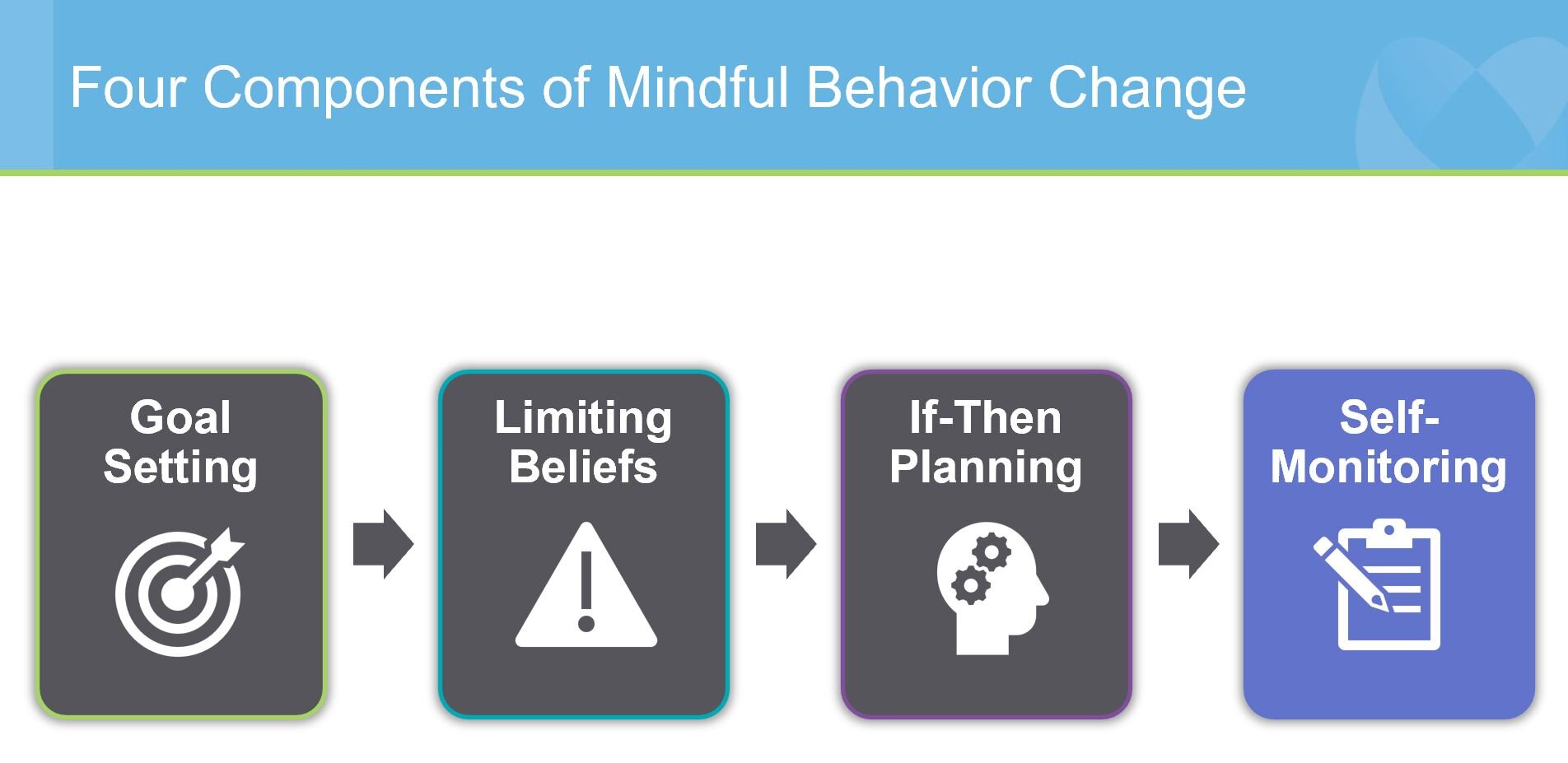A few blogs ago, I discussed the two networks of the brain: the default network (mindless) and the direct network (mindful). Click here if you would like to review that information. As I described in that blog, mindfulness requires us to activate the direct network of the brain, where we experience the world in real-time, not through the filter of our thoughts and feelings. Leveraging the direct network increases our awareness of the cues that trigger unhealthy habits and gives us the ability to make intentional choices about our behavior. This gives us an "override" ability to slow or stop unhealthy decisions. Monitoring for slip-ups is especially critical in sustaining our behavior long-term. That's because when our attention remains in the default network (mindless), it is unlikely that we will detect the cues or triggers we have identified for our If-Then plans. Self-monitoring is a skill, and like other skills, we get better with practice. Three critical components of self-monitoring are self-compassion, avoiding on/off thinking, and creating self-affirmations.
Self-Compassion
We will inevitably have slip-ups and go back to our old unwanted habits. Self-compassion is often most needed when we fail to live up to our expectations or perceive that we made some mistake. Without the ability to take care of ourselves, we can experience high levels of fatigue, burnout, stress, and give up on our goals. The following exercise provides an opportunity to explore what self-compassion is and why it differs from self-indulgence and self-pity. Take a few minutes to listen to this practice.
Want more tips to live a healthier and happier life? Check out Saundra’s latest book here.
On/Off Thinking
You may have experienced "on/off" thinking when you were embarking on behavior change. This type of thinking often occurs when we have failed to live up to our commitments. In these moments, we say to ourselves, "Well, I've broken my commitment. I may as well take a break and get back to it later." When we take these breaks from our healthy habits, we may have trouble moving from "off" to "on." For example, "If I can't do what I want the way I want, I just won't do it at all." Or "I will resume my exercise plan when things get back to normal." You may have even tried to start a new routine and thought, "If I have to go through all of this, I think it's easier to quit."
The first step in overcoming this type of thinking is recognizing that our thoughts drive how we perceive the world. They are an indication of how we will respond. In other words, our thoughts predict whether we will bounce back from a setback or give up on our goals. To help you resume or create healthy habits that may have fallen by the wayside, take a moment to consider the following:
Reflect on why you set this goal in the first place. For example, this reflection might remind you that having a healthy lifestyle is critical for you to live the kind of life you desire.
Next, take a moment to realize that everyone has times when they experience setbacks. After all, we are only human. We make mistakes, and what we did in the past need not determine what we do in the future. Sometimes all it takes to get back on course is to silently say, "I forgive myself. I am ready to get back on my path to healthy living."
Self-Affirmation
There will be times when we want to give up on our goals. One of the best ways to reset after a setback is to give yourself a pep talk. You can do this by creating self-affirmations to silence that internal critic. A self-affirmation is a positive statement of how we envision our best self or some aspect of what we desire in our life. The power of these statements lies in connecting them to what is meaningful to you. In other words, they need to focus on our most important values. That’s why mindlessly repeating statements without connecting to the meaning does not bring about the change we’re seeking. The following exercise provides a brief description of how to develop your customized affirmations, so you have your pep talk ready anytime you need it.
Next week's blog provides examples of how to use the four-component model of Mindful Behavior Change in real-world situations.



